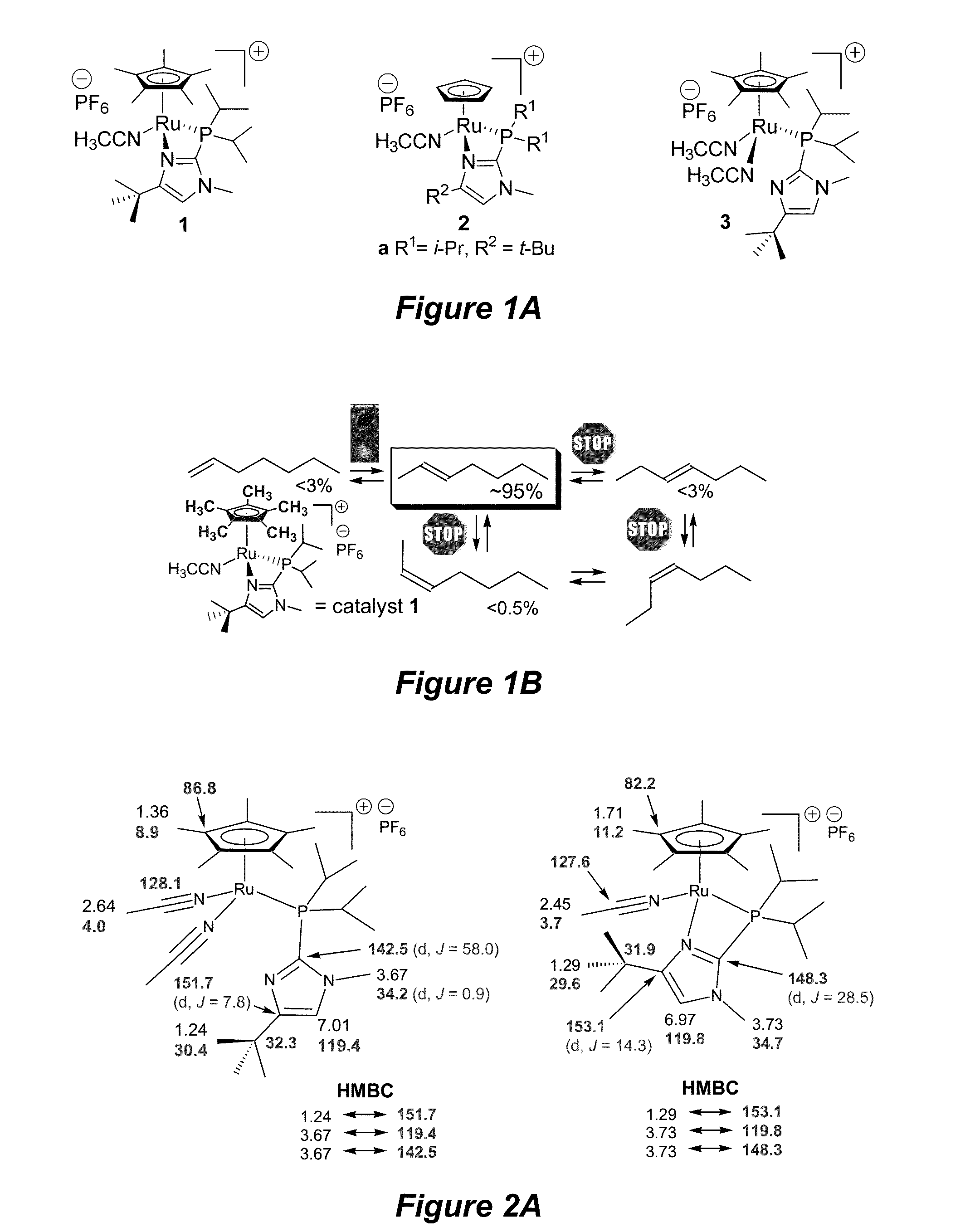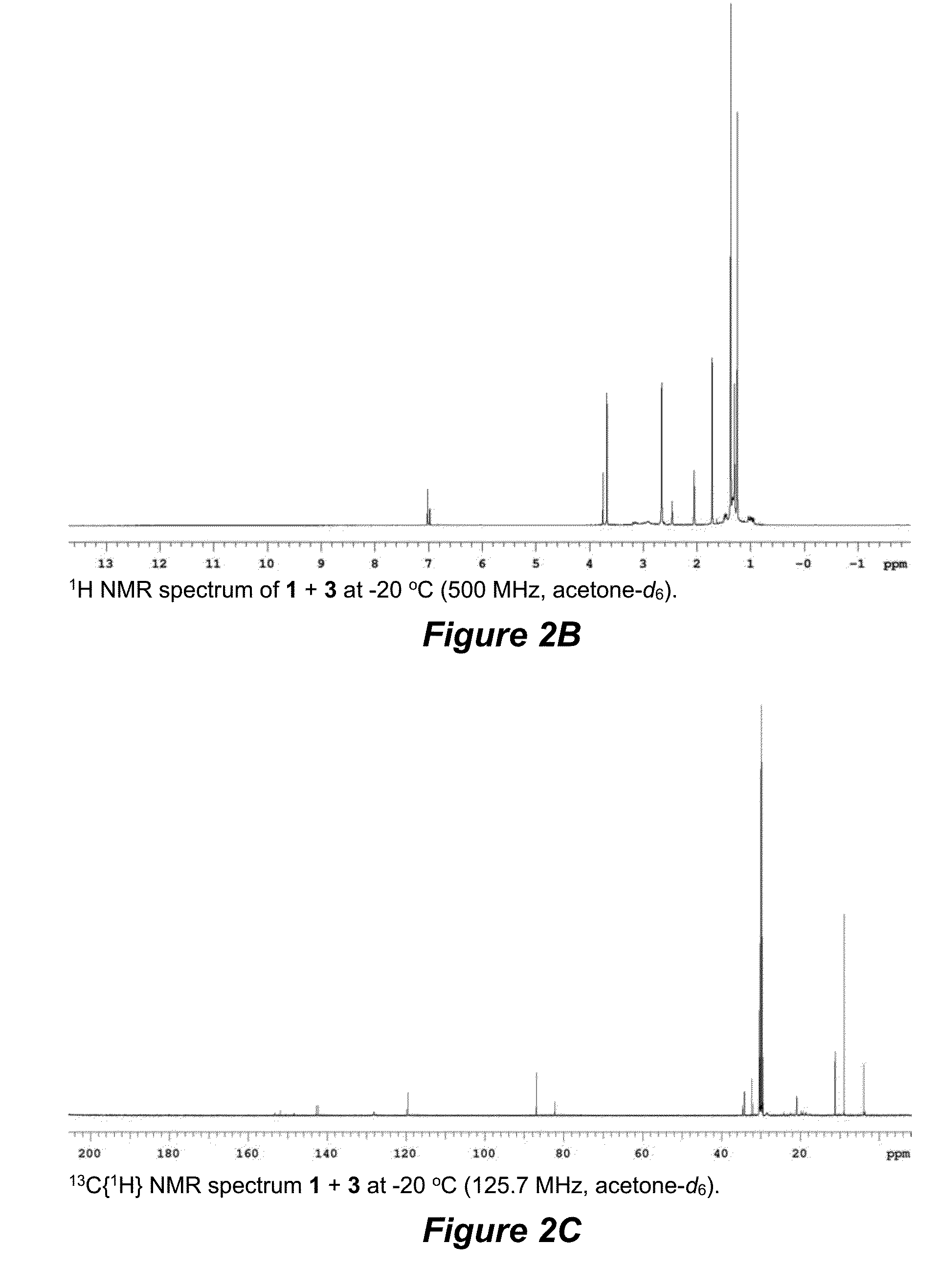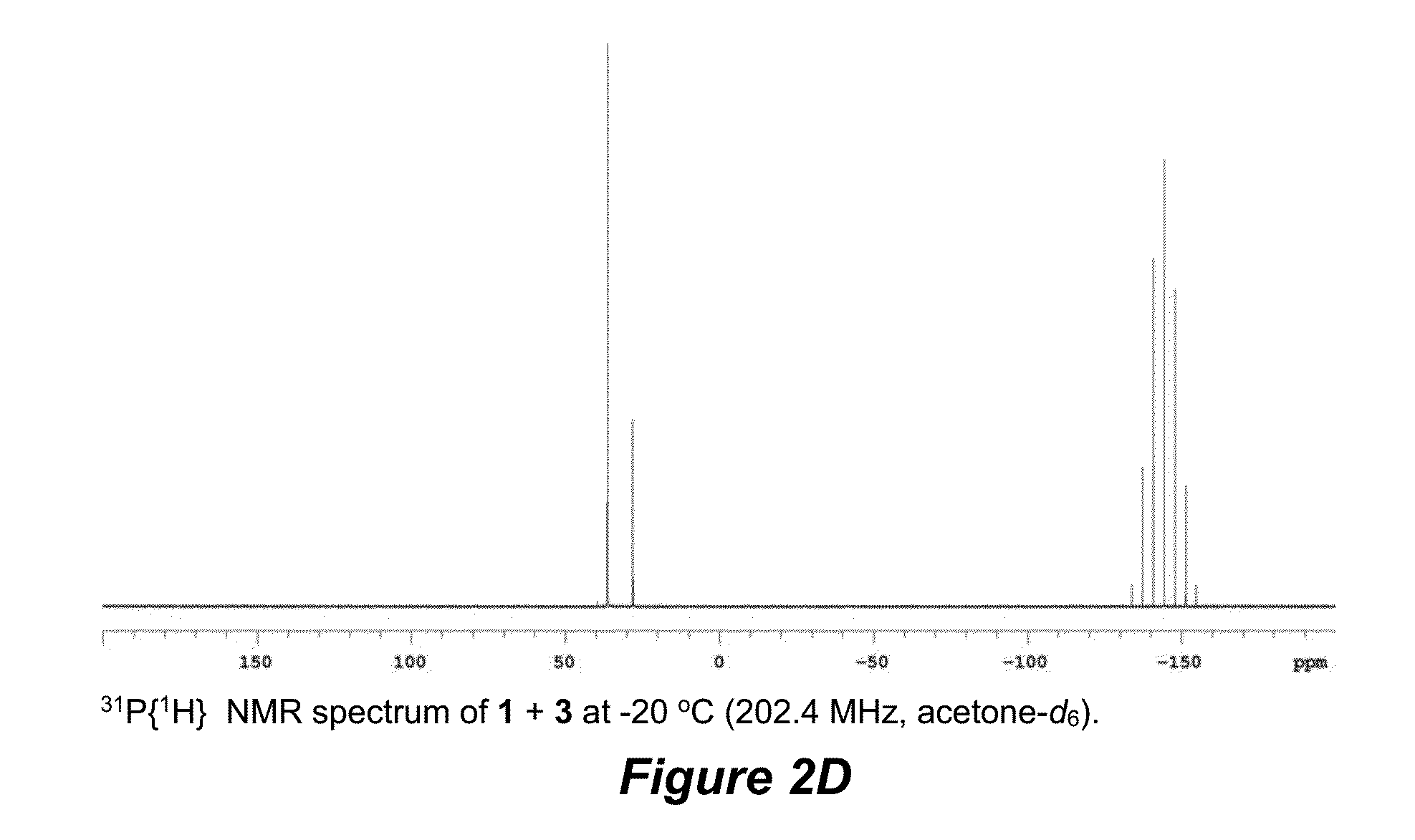Terminal alkene monoisomerization catalysts and methods
a technology of monoisomerization and alkene, which is applied in the direction of organic compound/hydride/coordination complex catalyst, physical/chemical process catalyst, ruthenium organic compound, etc., can solve the problems of significant stereocontrol, especially acute and unmet challenges, and conventional catalysts that manage to achieve regiocontrol generally suffer from lack of stereocontrol
- Summary
- Abstract
- Description
- Claims
- Application Information
AI Technical Summary
Benefits of technology
Problems solved by technology
Method used
Image
Examples
example 1
Catalyst Control of the Monoisomerization of 1-Alkenes to Trans-2-Alkenes
I. General Experimental.
[0127]Reactions were performed under dry nitrogen, using a combination of Schlenk line and glovebox techniques. Acetone-d6 received from Cambridge Isotope Labs was further deoxygenated by bubbling nitrogen gas through the liquid. NMR tube reactions were performed in resealable NMR tubes (J. Young).
[0128]Unless otherwise specified, NMR data were measured at 30° C. Varian spectrometers were used: a 500-MHz NOVA (500 MHz listed below for 1H=499.940 MHz and 125.7 MHz for 13C=125.718 MHz), and a 400-MHz Varian NMR-S (400 MHz listed below for 1H=399.763 MHz and 100 MHz for 13C=100.525 MHz).
[0129]1H and 13C NMR chemical shifts are reported in ppm, referenced to solvent resonances (1H NMR: δ 2.05 for CHD2COCD3 and 13C NMR: δ 29.92 for CD3COCD3). 1H NMR signals are given followed by multiplicity, coupling constants J in Hertz, integration in parentheses. For complex coupling patters, the first co...
PUM
| Property | Measurement | Unit |
|---|---|---|
| mol % | aaaaa | aaaaa |
| temperature | aaaaa | aaaaa |
| temperatures | aaaaa | aaaaa |
Abstract
Description
Claims
Application Information
 Login to View More
Login to View More - R&D
- Intellectual Property
- Life Sciences
- Materials
- Tech Scout
- Unparalleled Data Quality
- Higher Quality Content
- 60% Fewer Hallucinations
Browse by: Latest US Patents, China's latest patents, Technical Efficacy Thesaurus, Application Domain, Technology Topic, Popular Technical Reports.
© 2025 PatSnap. All rights reserved.Legal|Privacy policy|Modern Slavery Act Transparency Statement|Sitemap|About US| Contact US: help@patsnap.com



